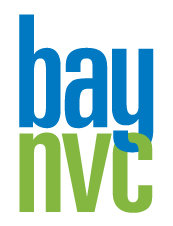by Miki Kashtan
In the last few days I’ve been almost haunted by realizing how often we want others’ behavior to change. We may want to see change in some small, annoying behavior that our child does, or a major harm created by the CEO of a transnational corporation. It has recently dawned on me that no matter the person or the behavior, creating change in another’s behavior is, in essence, a monumental task. And then again - why am I so surprised, when I know how difficult it is to create change within ourselves when we actively want to create such change? When, on top of how difficult creating any change is, we add the extra challenge that the other person may not want to create the change that we seek, it’s no wonder that we so often don’t manage to create the outcome we want outside ourselves.
I now believe that we can create change outside ourselves only if one of three conditions is in place. One is that we have enough resources at our disposal to stop the behavior that want to see changed, or to deliver such unpleasant consequences to the person doing it that they would choose to change. Another possibility is that the person recognizes a need of their own that motivates them to create the change we seek. And the last path is that through dialogue the person chooses to create the change because of care for our needs, or because of trust in our intentions for their well being. As someone who is committed to being a change agent, it’s quite humbling to recognize this. Humbling in particular because in my appetite for supporting change I am prone to attempting to stretch people into creating change beyond their own capacity to integrate it. If I truly take in what I am discovering, I may choose to change how I work for change, and, most certainly, my approach to working with others to support change in happening. I am early enough in my explorations about this that I don’t quite know yet how my work will be affected. For the moment, I am drawn to embarking on the exploration of what these conditions mean in three realms: personal relationships, organizational change, and social structural change. Given the bigness of this topic, I plan to focus, today, only on personal relationships, and come back next week to look beyond the personal.
When We Want Our Loved Ones to Change
Within our families and circle of friends, our clearest path to change is likely to be dialogue. I have long believed, and have experiences of it with several colleagues and my own housemate, that when two people have sufficient trust in their care for each other, a conversation about change in behavior can be relatively easy. The key is to be open to inquiry. If you do something I don’t like, there is no automatic formula about what would happen. I want to explore with you what it is that bothers me about the behavior and what it is that leads you to engage in the behavior. It’s only then, when we have that understanding deeply settled and trusted, that we can decide, together, whether you will change the behavior, I will adapt to it, or we will find a creative solution that transcends the either/or terms we began with. One of my little sorrows is knowing just how few people have experienced the magic that happens in such conversations when the goodwill is intact and the heart skills are there to support the flow of communication and connection. It’s not about having no conflict; it’s about having conflict that leads to more understanding and more satisfaction.

